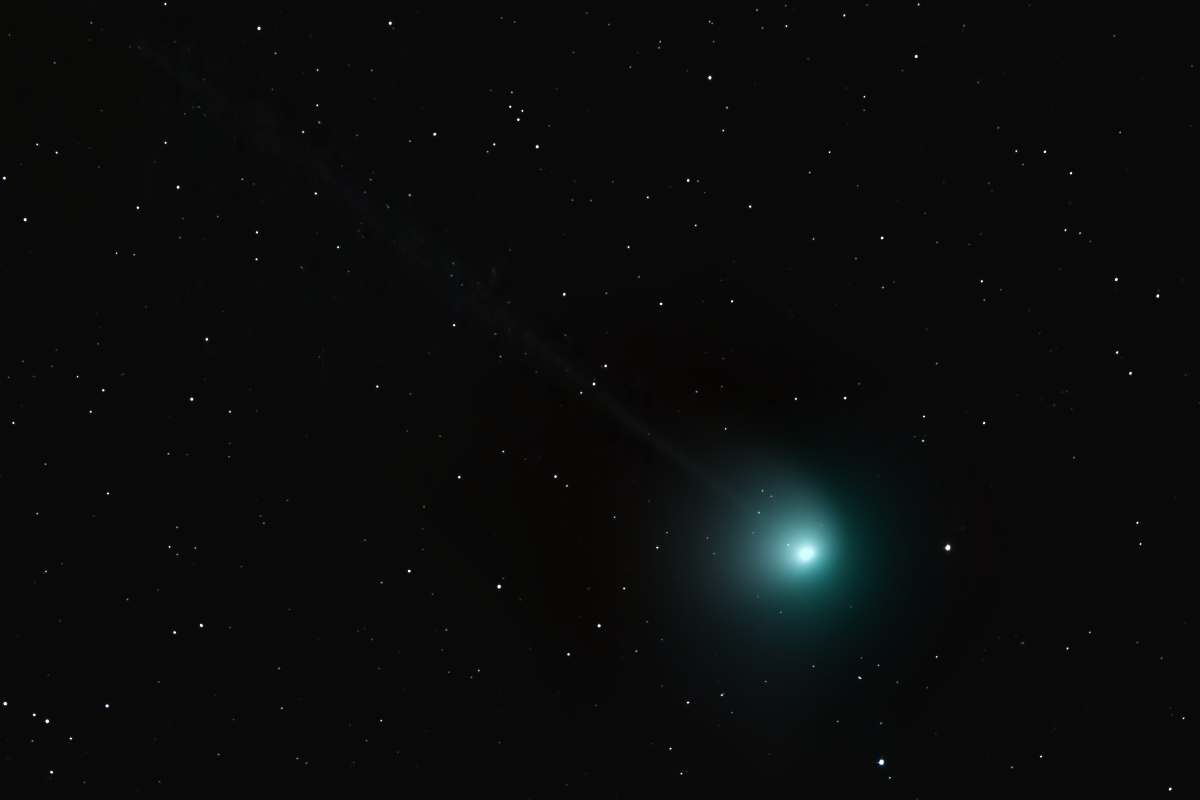| UPDATE: Comet C/2022 E3 (ZTF) (2023-1-31) ⬅︎ |
 |
Viewing Details
* At Starry Hill on Jan 31, the comet was easily visible in a binocular and telescope but not naked-eye.
* We found it 10° east of Polaris. This is the width of a fist held at arm's length.
* It looked like a fairly large, round 'fuzzball'. No color nor tail were visible.
* We were able to image it (photo above) and it showed a deep blue-green color with a very dim tail.
This is a great time to view Comet C/2022 E3 (ZTF). It should be brightening in February but our Moon will also be brightening so we aren't sure if it will get easier or harder to view over the next week or two. We recommend you use a binocular to find it even if you have a telescope. Then use the telescope under low power to view details.
Keep in mind that this comet is moving fast... in just minutes, we could see that it had moved in relation to the background stars. It is no longer next to Polaris. Around Feb 5 it will be next to the very bright star Capella and, by Feb 10, next to red Mars.
For lots of details about this comet and where to look, see An Icy Visitor in early 2023: Comet C/2022 E3 (ZTF).
If you are able to view the comet, we’d love to hear from you and add your comments to our next update on this website. Email us here. Good luck!
Photo Details
Comet C/200 E3 (ZTF) is moving so fast that it can be challenging to photograph. With any astrophoto, to get the best quality you need to take multiple pictures that you stack or combine into a single photo. However, with a comet that is moving rapidly, normal stacking doesn't work.... if you align the stack on the stars you get an elongated comet, but if you align the stack on the comet you get elongated stars (star trails). Here's how we solved this problem to get the photo above:
1) We used a Canon camera with a Celestron 11" f/2 telescope on a tracking mount.
2) We took sixteen 1-minute pics of the comet.
3) In our special astrophoto processing software (Pixinsight) we split each of the 16 pics into two pics: one with the comet only and one with the stars only. So now we had 32 pics.
4) We stacked the 16 comet-only pics into a single pic so that the core of the comet was aligned.
5) We stacked the 16 star-only pics into a single pic so that the stars were aligned.
6) After cleaning up the two pics a bit, we combined them into a single pic using a general photo program (Affinity Photo). We then did further processing to bring out the colors and tail.
Although we never saw a tail in our binocular or telescope, it became visible in the combined photo. If you don't see the tail in the image above, try turning up the brightness of your screen.... the tail is dim but it's there!
|
| |



